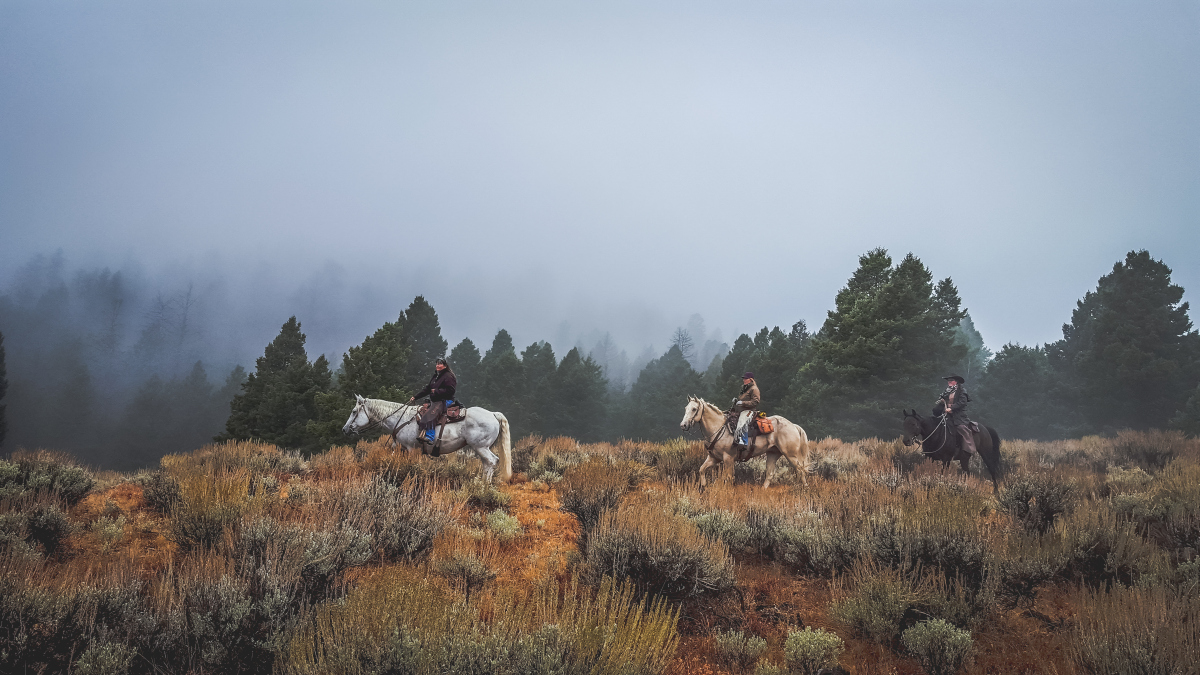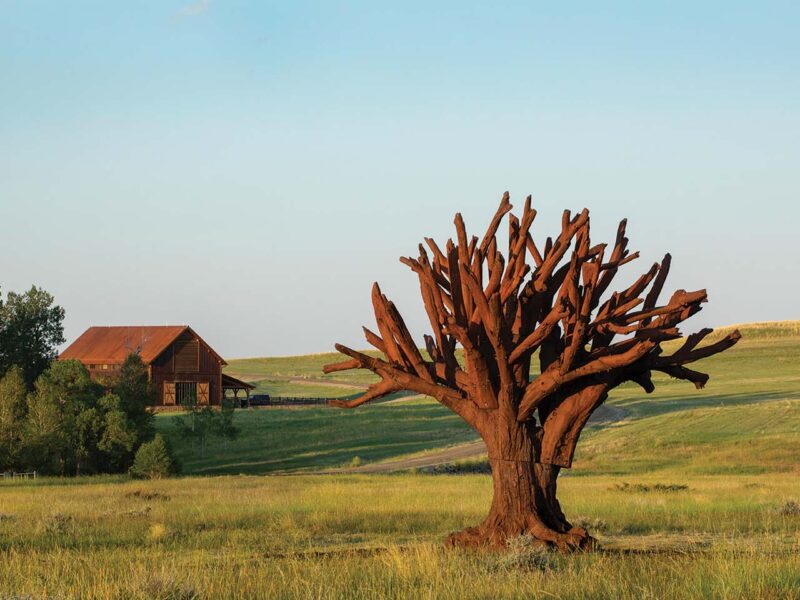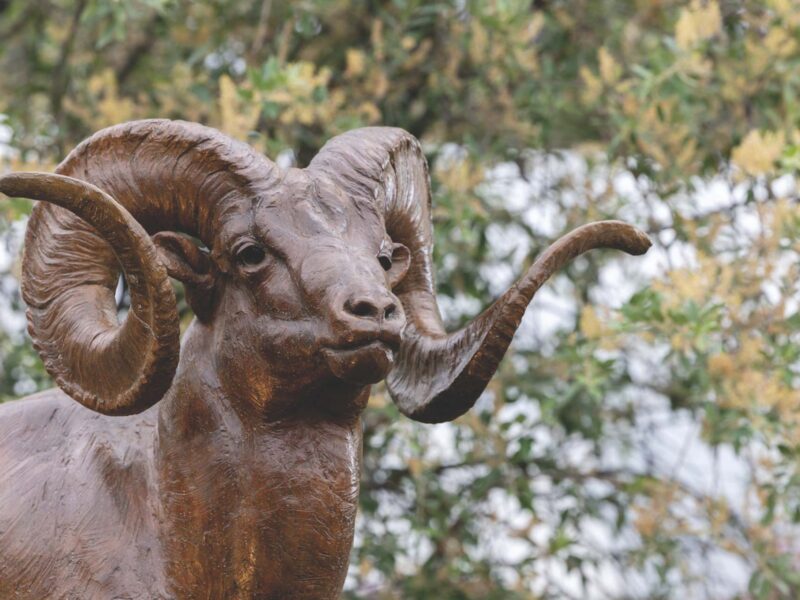People are at the heart of healthy western wildlands
Of the many living beings found in working wild landscapes, the paucity of human beings is palpable. For many of us in the working wild, the coronavirus-caused shutdown did not change our daily lives. Yet, in my work supporting the working wild, people are integral. WLA, in providing a voice for landowners, strives to advance policies and practices that support working lands, connected landscapes and native species. Critical to this mission is collaboration.
In formalizing my experience with collaboration this summer through the University of Wyoming’s Collaborative Program in Natural Resources, I can now give names to the many processes and their associated outcomes. Dialog and deliberation can lead to increased understanding of other values. A visioning process can result in coordinated decisions with shared objectives, and formal decision making can produce consensus decisions. These processes occur along many spectrums, one of which is time. Time is needed to breakdown biases and barriers through personal interactions. Accessing our shared human experience, often in the more informal settings that take place around a meeting, helps us move from our positions rooted in culture and ideology to common interests.
Reducing conflict between humans, and between humans and wildlife
Convening the Conflict Reduction Consortium, a group of stakeholders in livestock-wildlife conflict that have been engaged in more than a year of landowner-led collaborative learning, is a key activity of the Working Wild Challenge program at WLA. Through regular meetings this group of about 30 individuals representing landowners, land trusts, wildlife advocates, research scientists, professors, wildlife biologists, extension agents, and agency staff agreed upon a principle statement, which is really a fundamental objective of the group.
We recognize wildlife conflicts on working lands will exist, and may be reduced, through the implementation of effective practices to minimize conflicts. The economic viability of working lands operating on public and private lands is an important part of maintaining a landscape that is suitable to wildlife. The Consortium supports the economic viability of these working agricultural lands and the existence of native species, including large carnivores.
To participate in this collaborative process, one must fundamentally agree with this statement.
Elevating the landowner voice through collaboration
WLA has been engaged in many other collaboratives this summer. We co-convened a workshop with researchers, landowners, and NGOs, led by Arthur Middleton at UC Berkeley and the Property, Environment and Research Center to find and develop solutions to migratory ungulates on private lands. You can find a summary report on this workshop here:
As fellows at the Center for Collaborative Conservation, Rae Nickerson and I have been leading focus groups to inform a West-wide survey that will provide important policy and management recommendations for communities living with wolves. A group of ranchers from Canada to California to New Mexico meets twice monthly on Practitioners’ Calls that began as a space for peer-to-peer learning but morphed into a discussion of needed economic solutions to the challenges of the working wild. These individual collaborative endeavors have arrived at the same conclusion. Working lands provide critical value to wildlife, and this value comes at a cost to many of the businesses that rely on working lands. To keep the open space of the West, valued by both people and wildlife, intact, multi-pronged economic solutions, including cost-sharing for conflict prevention practices, compensation for losses, and payments for the ecosystem services that working lands provide, should be available and tailored to suit individual agricultural operation’s needs.
Mick McCarty, owner of Quarter Circle Eleven Ranch, LLC, collaborated with USDA NRCS, Wyoming Game & Fish, the Meeteetse Conservation District, the Bureau of Land Management, and the Nature Conservancy to complete an 11-mile wildlife-friendly fencing project on his ranch. Here he speaks with Eric Maichak of Wyomng Game & Fish in front of a section of the fence.
Western landowners and their businesses are as diverse as Amazonian rainforests. It is a challenge to give voice to a community’s needs without the collective voice of a watershed level collaborative. Western Landowners Alliance tries to fill that gap by working across the West in a way that provides synergy to our rugged, individualist landowner voices. Common themes and needs emerge in West-wide dialog, and the call to action here is clear. Working lands in wild places faces additional economic challenges, yet as Linda Owens of the Madison Valley Ranchlands Group reminded us at the migratory ungulates workshop this summer, “A steer sells for the same price at a sale barn in Montana as it does in Iowa.” Yet the West’s wild landscapes and the ranches that keep them intact provide vastly different ecosystem services than the farmlands of the Midwest.
As Jim Corbett, co-founder of the Malpai Borderlands Group has written, “Ranching is now the only livelihood that is based on human adaptation to wild, biotic communities.” Today’s America wants western wildlands to support a full suite of carnivores and the species they prey upon. That comes at a price. Distribute the costs of housing America’s wildlife on working lands, or housing developments for the same people that appreciate these vast wild landscapes will be responsible for their destruction.
Top image by Melanie Elzinga.





